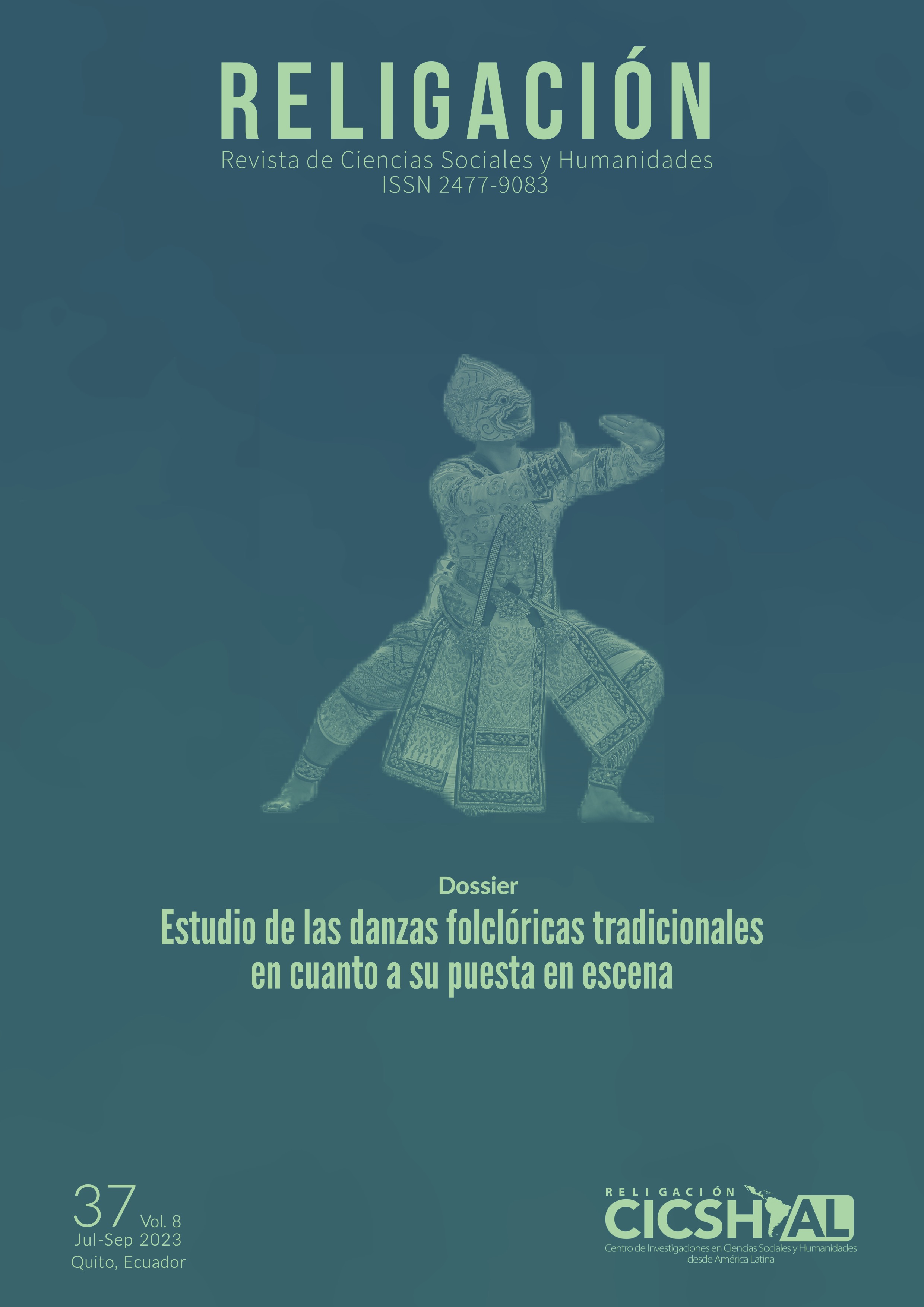Realidad virtual y aumentada en la educación superior: experiencias inmersivas para el aprendizaje profundo
Resumen
El presente estudio se adentra en un terreno de vanguardia donde la realidad virtual y aumentada convergen con la educación superior; propone explorar cómo la integración de la realidad virtual y aumentada puede impactar positivamente en la educación superior, promoviendo un aprendizaje profundo. A través del análisis de casos de estudio y la revisión de la literatura actualizada, se busca comprender cómo estas tecnologías pueden revolucionar la forma en que los estudiantes adquieren y aplican el conocimiento en un entorno educativo en constante evolución. Para lo cual se realizó una revisión bibliográfica, que implica recopilación, evaluación existente sobre un tema específico. Los resultados han demostrado que la realidad virtual y aumentada en la educación superior ha sido un tema de interés en los últimos años especialmente dentro del ámbito de las ciencias sociales, deduciendo que la realidad virtual ha surgido como un patrón pionero que altera fundamentalmente la forma en que interactúan las personas y los sistemas informáticos.
Descargas
##plugins.generic.paperbuzz.metrics##
Citas
Aksyonov, S., Arifulina, R., Katushenko, O., Sergeeva, T., & Romanovskaya, L. (2021). Digital transformation of the educational space: New tools and technological solutions. Perspectives of Science and Education, 49, 24-43. https://pnojournal.wordpress.com/2021/03/01/aksenov/
Álvarez, I., Manero, B., Morodo, A., Suñé, N., & Henao, C. (2023). Realidad Virtual Inmersiva para mejorar la competencia de gestión del clima del aula en secundaria. Educación XX1, 26(1), 249-272. https://doi.org/10.5944/educxx1.33418
Bazavan, L., Horatiu, R., Florina, P., Stefan, C., Bizdoaca, G. (2021). Virtual Reality and Augmented Reality in Education. [Congress]. 30th Annual Conference of the European Association for Education in Electrical and Information Engineering (EAEEIE), Prague, Czech Republic. https://doi.org/10.1109/EAEEIE50507.2021.9531005
Banchoff, C., Fava, L., Schiavoni, A., & Marti, S. (2020). Realidad Aumentada y Realidad Virtual: experiencias en diferentes ámbitos de aplicación. Red de Universidades con Carreras en Informática. http://sedici.unlp.edu.ar/handle/10915/104000
Billinghurst, M., & Duenser, A. (2021). Augmented reality in the classroom. Computer, 45(7), 56-63. https://doi.org/10.1109/MC.2012.32
Campos, N., Navas, M., & Moreno, A. (2019). Realidad virtual y motivación en el contexto educativo: Estudio bibliométrico de los últimos veinte años de Scopus. Alteridad, 15(1), 47-60. https://doi.org/10.17163/alt.v15n1.2020.04
Chen, C. C., Wang, C. H., & Chan, H. C. (2020). Exploring the potential of using virtual reality in biology education: A constructive design research. British Journal of Educational Technology, 51(1), 54-74.
Coccia, M. (2019). Theories of the evolution of technology based on processes of competitive substitution and multi-mode interaction between technologies. Journal of Economics Bibliography, 6(2), 99–109. https://doi.org/10.1453/jeb.v6i2.1889
Colom, A. (2020). The Digital Divide. Information, Communication & Society, 23(11), 1706-1708. https://www.tandfonline.com/doi/abs/10.1080/1369118X.2020.1781916
Cruz, C., Sandin, D. J., DeFanti, T. A., Kenyon, R. V., & Hart, J. C. (1993). The CAVE: audio visual experience automatic virtual environment. Communications of the ACM, 35(6), 64-72.
Dalgarno, B., & Lee, M. J. W. (2010). What are the learning affordances of 3-D virtual environments? British Journal of Educational Technology, 41(1), 10-32. https://bera-journals.onlinelibrary.wiley.com/doi/full/10.1111/j.1467-8535.2009.01038.x
Deterding, S., Dixon, D., Khaled, R., & Nacke, L. (2011). From game design elements to gamefulness: defining gamification. Proceedings of the 15th international academic MindTrek conference: Envisioning future media environments (pp. 9-15).
Dunleavy, M., Dede, C., & Mitchell, R. (2009). Affordances and limitations of immersive participatory augmented reality simulations for teaching and learning. Journal of Science Education and Technology, 18(1), 7-22. https://link.springer.com/article/10.1007/s10956-008-9119-1
Felkel, I., & Dickmann, I. (2022). Realidad virtual y formación docente: aportes, desafíos y límites. Educación Temática Digital ETD, 24 (2), 296-315. https://doi.org/10.20396/etd.v24i2.8659798
Gonzalez, M., Benchoff, E., Huapaya, C., Remon, C., Lazzurri, G., Guccione, L., Lizarralde, F. (2018). Advances in Test Personalization and Adaptation in a Virtual Learning Environment. In P. Pesado, C. Aciti. (eds) Computer Science – CACIC. Communications in Computer and Information Science. Springer, Cham. https://doi.org/10.1007/978-3-030-20787-8_4
Gudoniene, D., & Rutkauskiene, D. (2019). Virtual and Augmented Reality in Education. Baltic Journal of Modern Computing, 7(2). https://doi.org/10.22364/bjmc.2019.7.2.07
Howard, N., & Lomas, L. (2020). Rethinking personal data in the age of big data. Internet Policy Review, 9(1).
Johnson, E., & Smith, A. (2020). The changing landscape of technology and its impact on work and employment. Annual Review of Organizational Psychology and Organizational Behavior, 7, 405-426.
Johnson, L., Adams Becker, S., Estrada, V., & Freeman, A. (2019). NMC Horizon Report: 2019 Higher Education Edition. The New Media Consortium.
Liz, M. (2020). ¿Un mundo nuevo? Realidad virtual, realidad aumentada, inteligencia artificial, humanidad mejorada, Internet de las cosas. Arbor, 196(797), 572. https://doi.org/10.3989/arbor.2020.797n3009
Marougkas, A., Troussas, C., Krouska, A., & Sgouropoulou, C. (2023). Virtual Reality in Education: A Review of Learning Theories, Approaches and Methodologies for the Last Decade. Electronics, 12(13), 2832. https://doi.org/10.3390/electronics12132832
Montenegro-Rueda, M., & Fernández-Cerero, J. (2022). Realidad aumentada en la educación superior: Posibilidades y desafíos. Revista Tecnología, Ciencia y Educación, 95-114. https://doi.org/10.51302/tce.2022.858
Muñoz-Saavedra, L., Miró-Amarante, L., & Domínguez-Morales, M. (2020). Augmented and Virtual Reality Evolution and Future Tendency. Applied Sciences, 10(1), 322. https://doi.org/10.3390/app10010322
Piaget, J. (1970). Piaget’s theory. In P. H. Mussen (Ed.), Carmichael’s Manual of Child Psychology (pp. 703-732). Wiley.
Seigneurbieux, P. (2019). Virtual reality system with advanced low-complexity user interactivity and personalization through cloud-based data-mining and machine learning. https://patents.justia.com/inventor/pierre-seigneurbieux
Sousa, R., Campanari, R., & Rodrigues, A. (2021). La realidad virtual como herramienta para la educación básica y profesional. Revista Científica General José María Córdova, 19(33), 223-241. https://doi.org/10.21830/19006586.728
Sukhdeve, P. (2021). Implementing Augmented Reality Into Immersive Virtual Learning Environments: Implementation of Augmented Reality Technologies in Immersive Education Programs (pp. 102-118). https://doi.org/10.4018/978-1-7998-4222-4.ch006
Sutherland, I. E. (1968). A head-mounted three-dimensional display. Association for Computing Machinery. https://doi.org/10.1145/1476589.1476686
Derechos de autor 2023 Richar Lutter Calderón Zambrano, María Elena Yánez Romero, Kerly Elizabeth Dávila Dávila, Carolina Estefanía Beltrán Balarezo

Esta obra está bajo licencia internacional Creative Commons Reconocimiento-NoComercial-SinObrasDerivadas 4.0.












